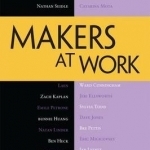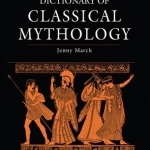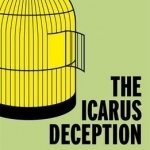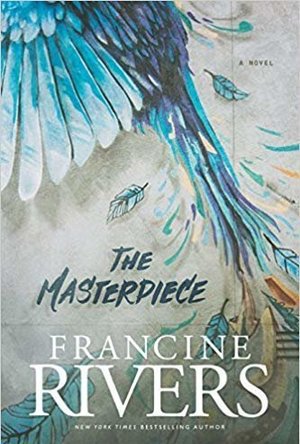
Eco Packaging Now
Book
This book provides answers to practical questions about how we can make our packaging ecologically...

Integrating Everything: The Integrated Practitioner: Book 4
Book
'Health practice has always been many things, with many constraints and pressures. These things have...

Makers at Work: Folks Reinventing the World One Object or Idea at a Time
Book
What do you get when you combine an electronics hobbyist, hacker, garage mechanic, kitchen table...
Hazel (1853 KP) rated A Piece Of The World in Books
May 30, 2018
Until reading Christina Baker Kline’s note at the end of the book, it is impossible to guess that it is based on real people, although, admittedly, it is a little strange to name the main character after oneself. In fact, A Piece of the World is written around a single painting in the Museum of Modern Art, New York: Christina’s World (1948) by Andrew Wyeth, a man who appears and paints this work in the story.
Baker Cline researched thoroughly into the background story of the painting. Christina Olson, the main character of this book, was a real person who posed for Wyeth as he painted this striking picture. Although the overall story is a work of fiction, the dates and key characters are biographically accurate. Beginning in 1939, the narrative weaves too and fro, from Christina’s present day to her childhood and back again. Christina is an ageing woman who can barely walk and lives in a dilapidated cottage with her brother on a hill in the village of Cushing, Maine. Having lived in this state for so long, it is a welcome surprise to be visited by the young Andrew Wyeth who falls in love with the cottage and regularly comes to work on his canvases in their upper rooms. Through their peaceful relationship and flashbacks to her past, Christina’s character development is investigated and knitted together to explain why she has become this recluse on a hill.
Christina had problems from a very young age. After almost dying from a fever, she developed an undiagnosed degenerative disease that slowly ate away at the nerves in her arms and legs. Today, neurologists believe this to be Charcot-Marie-Tooth disease but there were no doctors able to provide this diagnosis at the time. Christina suffered aches and pains growing up and could barely walk in a straight line. Her determination to keep going is admirable and makes her a strong female protagonist.
One day in her early twenties, Christina meets a boy who pays her the kind of attention that she has never received before. Believing his promises that they will be together forever, she dares to dream of having a normal life. The reader, however, knows that the future Christina is alone with only her brother for company, making it heartbreaking to read of their developing romance knowing that it is not going to last.
There is no “happy-ever-after” to this story, nor is there a sad ending. It is an account of a woman who had been dealt a raw deal in life but continued getting on despite it. The end result, the painting Christina’s World, shows Christina as she sees herself. She may not be able to walk but she is still a woman; she made the most of her childhood, she never complained. This painting is her “letter to the World that never wrote to [Her].”
A Piece of the World is a powerful novel about purpose and determination. Christina may not have had a typical, successful life or become famous but she had her daily achievements: crawling through a field for an hour to visit a friend, cooking dinners despite not being able to stand up, carrying on after the end of a romantic relationship …
Written as gracefully as the brushstrokes of a painting with elements of Emily Dickinson thrown in here and there, A Piece of the World is a beautiful piece of work. It is something that can be enjoyed as you are mentally drawn into the storyline, leaving you wondering what happens to Christina and her brother after the completion of the painting. It is a novel the author can be proud of.
Hazel (1853 KP) rated A Piece Of The World in Books
Dec 14, 2018
Until reading Christina Baker Kline’s note at the end of the book, it is impossible to guess that it is based on real people, although, admittedly, it is a little strange to name the main character after oneself. In fact, <i>A Piece of the World</i> is written around a single painting in the Museum of Modern Art, New York: <i>Christina’s World</i> (1948) by Andrew Wyeth, a man who appears and paints this work in the story.
Baker Cline researched thoroughly into the background story of the painting. Christina Olson, the main character of this book, was a real person who posed for Wyeth as he painted this striking picture. Although the overall story is a work of fiction, the dates and key characters are biographically accurate. Beginning in 1939, the narrative weaves too and fro, from Christina’s present day to her childhood and back again. Christina is an ageing woman who can barely walk and lives in a dilapidated cottage with her brother on a hill in the village of Cushing, Maine. Having lived in this state for so long, it is a welcome surprise to be visited by the young Andrew Wyeth who falls in love with the cottage and regularly comes to work on his canvases in their upper rooms. Through their peaceful relationship and flashbacks to her past, Christina’s character development is investigated and knitted together to explain why she has become this recluse on a hill.
Christina had problems from a very young age. After almost dying from a fever, she developed an undiagnosed degenerative disease that slowly ate away at the nerves in her arms and legs. Today, neurologists believe this to be <i>Charcot-Marie-Tooth</i> disease but there were no doctors able to provide this diagnosis at the time. Christina suffered aches and pains growing up and could barely walk in a straight line. Her determination to keep going is admirable and makes her a strong female protagonist.
One day in her early twenties, Christina meets a boy who pays her the kind of attention that she has never received before. Believing his promises that they will be together forever, she dares to dream of having a normal life. The reader, however, knows that the future Christina is alone with only her brother for company, making it heartbreaking to read of their developing romance knowing that it is not going to last.
There is no “happy-ever-after” to this story, nor is there a sad ending. It is an account of a woman who had been dealt a raw deal in life but continued getting on despite it. The end result, the painting <i>Christina’s World</i>, shows Christina as she sees herself. She may not be able to walk but she is still a woman; she made the most of her childhood, she never complained. This painting is her “letter to the World that never wrote to [Her].”
<i>A Piece of the World</i> is a powerful novel about purpose and determination. Christina may not have had a typical, successful life or become famous but she had her daily achievements: crawling through a field for an hour to visit a friend, cooking dinners despite not being able to stand up, carrying on after the end of a romantic relationship …
Written as gracefully as the brushstrokes of a painting with elements of Emily Dickinson thrown in here and there, </i>A Piece of the World</i> is a beautiful piece of work. It is something that can be enjoyed as you are mentally drawn into the storyline, leaving you wondering what happens to Christina and her brother after the completion of the painting. It is a novel the author can be proud of.
<imgsrc="https://www.moma.org/media/W1siZiIsIjE2NTQ1NyJdLFsicCIsImNvbnZlcnQiLCItcmVzaXplIDIwMDB4MjAwMFx1MDAzZSJdXQ.jpg?sha=33c151dba7f8de4c"width="100"height="40"alt="ChristinasWorld"/>;

Dictionary of Classical Mythology
Book
Jenny March's acclaimed Dictionary of Classical Mythology, first published in 1998 but long out of...
Molly J (Cover To Cover Cafe) (106 KP) rated The Masterpiece in Books
Feb 27, 2019
This book has amazing characters. Roman and Grace are created with such depth and complexity. They were true-to-life and really nestled into my soul. The way they interacted, the way their story unfolds on the pages, really shined for me. As someone who was in Honors Art 4 for four years of highschool, I always fall for books that center around the world of art. I could feel Roman's artistic ways flow freely off the pages. And Grace, being a single mom, really nudged at me. I love when I connect with the characters on a deeper level.
This book is beyond 5 stars. I wasn't able to put it down once I picked it up. The pages kept turning, the feelings kept being felt. I smiled, I cried, I smiled again. The inspiration that Ms. Rivers weaves into this romance novel is incredible. It really brings to light the ultimate Masterpiece from above. If you are looking for a book that will be easy reading, this isn't for you. If you are looking for a book that will make you laugh throughout, this isn't for you. If you are looking for a book that will sweep you off your feet, spin you in a million directions, twist your soul, and throw you down with a bam, this is absolutely the book for you. You'll think about this book long after you've closed the cover. Well done, Ms. Rivers! Fantabulous job!
*I received a complimentary copy of this book from Publisher/Tyndale Blog Network and was under no obligation to post a review, positive or negative.*

It's Not Rocket Science: 4 Simple Strategies for Mastering the Art of Execution
Book
Stop chasing hot trends and start driving real growth It's Not Rocket Science blasts through the...

Queer Saint: The Cultured Life of Peter Watson
Adrian Clark and Jeremy Dronfield
Book
When Peter Watson was murdered in his bath by a jealous boyfriend in 1956, the art world lost one of...

The Icarus Deception: How High Will You Fly?
Book
In The Icarus Deception, Seth Godin's most inspiring book, he challenges readers to find the courage...

